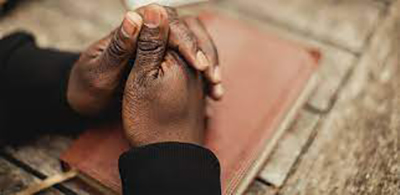(SOURCE: RELIGION NEWS SERVICE)
Adelle M. Banks / Religion News Service
WASHINGTON (RNS)—Predominantly Black congregations, known for their high levels of community outreach during the COVID-19 pandemic, have remained the most stable in combined attendance—in person and online—compared with multiracial and white majority congregations.
But they are also facing the greatest monetary struggles, with 34 percent reporting their financial health is worse in 2023 than in 2018, compared with 29 percent of majority white congregations and 28 percent of multiracial congregations.
A new report highlights the challenges faced by Black and multiracial congregations, as well as their resilience, in the wake of a pandemic that prompted significant changes in worship and community service.
“As far as opening up as vaccine sites, to actually put in place mitigation measures—so whether that’s shutting down, encouraging masks—majority Black congregations and multiracial congregations led those efforts,” said B. Clarvon Watts, author of Understanding the Pandemic Impact on Black and Multiracial Congregations.
Watts is a sociologist and postdoctoral research fellow at the Hartford Institute for Religion Research, which released the report Jan. 4.
Black congregations—affiliated with mainline, evangelical and historically Black denominations—often were significantly more involved in some responses to COVID-19.
Nearly all those surveyed—99 percent—encouraged vaccinations, compared with 53 percent of majority white congregations and 49 percent of multiracial congregations, defined in the report as those where no one racial group comprises more than 80 percent of the congregation.
Watts said many congregations featuring nonwhites embraced hybrid services as they adapted to the pandemic.
While majority white congregations were the most likely to offer a virtual worship opportunity at least once a week (82 percent), Black majority congregations were the most likely to offer multiple online worship opportunities throughout the week (27 percent), compared with 23 percent of multiracial congregations and 15 percent of white majority congregations.
The community involvement during the pandemic was an extension of the “octopus legs” of Black churches, Watts explained. Historically, these congregations often operated as hubs for providing education, legal and health opportunities for African Americans, who often were unable to access those resources elsewhere due to discrimination and segregation.
“You’re trying to meet multiple, multiple needs,” she said of the pandemic-influenced hybridity, “trying to provide in person and virtual worship, virtual programming, whether that’s education or it’s gathering to pray or gathering to do Communion.”
Likewise, multiracial congregations often sought to use the hybrid model for the range of families in their congregations, from working parents to immunocompromised congregants, she said.
Congregations reported a decrease in their local community activities from before the pandemic to 2023. While majority white congregations said their rate of involvement remained constant, the percentage of majority Black and multiracial congregations agreeing or strongly agreeing they were civically engaged decreased 21 percent and 12 percent respectively.
Congregations of all racial groups saw a significant decline of volunteers by summer 2021. Black congregations, by 2023, reported a return to the pre-pandemic level of about 30 percent of their congregation serving as regular volunteers. However, multiracial and majority white congregations, whose volunteers were near 40 percent before the pandemic, reported just 35 percent in 2023.
Report examined ministerial well-being
The report, which contrasted congregational life today with that pre-pandemic, also looked at clergy well-being over a two-year period.
Watts, who also runs a Black church’s nonprofit in Connecticut, said the pandemic exacerbated the already extensive roles of clergy who marry, counsel and bury congregants.
“I think it’s too big for any one person or any one institution,” she said, suggesting the need for greater partnerships in congregations and the community to support clergy.
In fact, the report notes clergy across the board, regardless of their congregation’s racial makeup, were more likely to have thoughts about exiting their congregations in 2023 than in 2021.
“The decreased well-being among clergy and increased consideration of leaving ministry or one’s faith community is a shared burden among all clergy, yet slightly less dire for Black Christian congregational leaders,” Watts stated in the report.
“Black clergy’s commitment to their call and subsequent congregations’ resilience throughout the pandemic has been and continues to be unwavering.”
The findings are based on data from the Faith Communities Today and the Exploring the Pandemic Impact on Congregations study. Sample sizes for Black majority congregations range from 140 in an EPIC study to 774 in a FACT study; for multiracial congregations, from 841 in EPIC to 2,623 in FACT; for white majority congregations, 2,802 in EPIC to 10,073 in FACT.
The estimate for the margin of error is plus or minus 4 percentage points.

